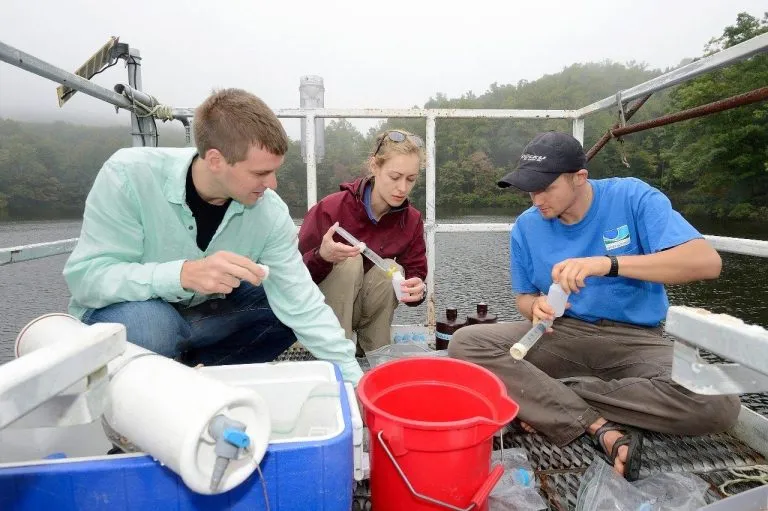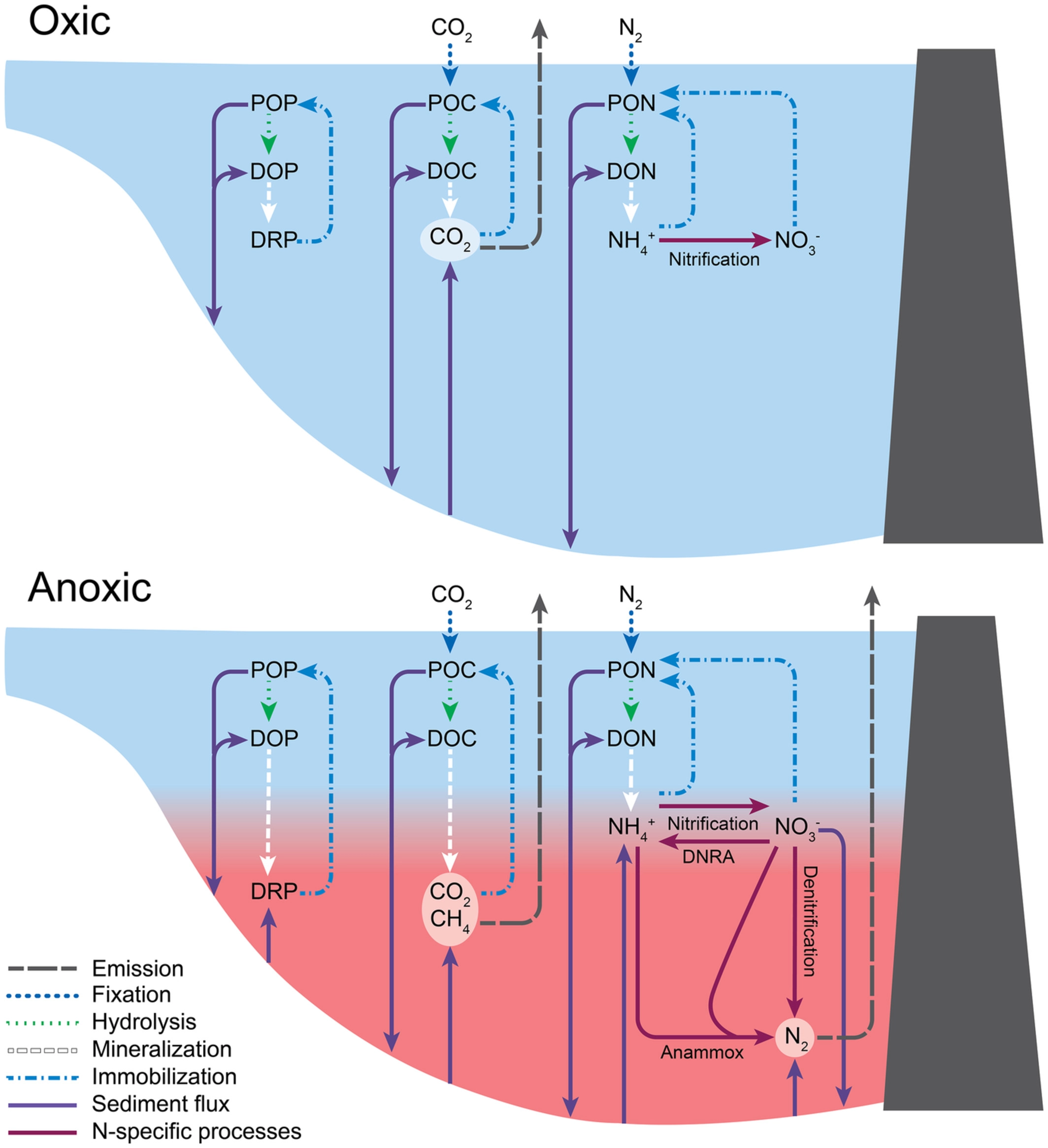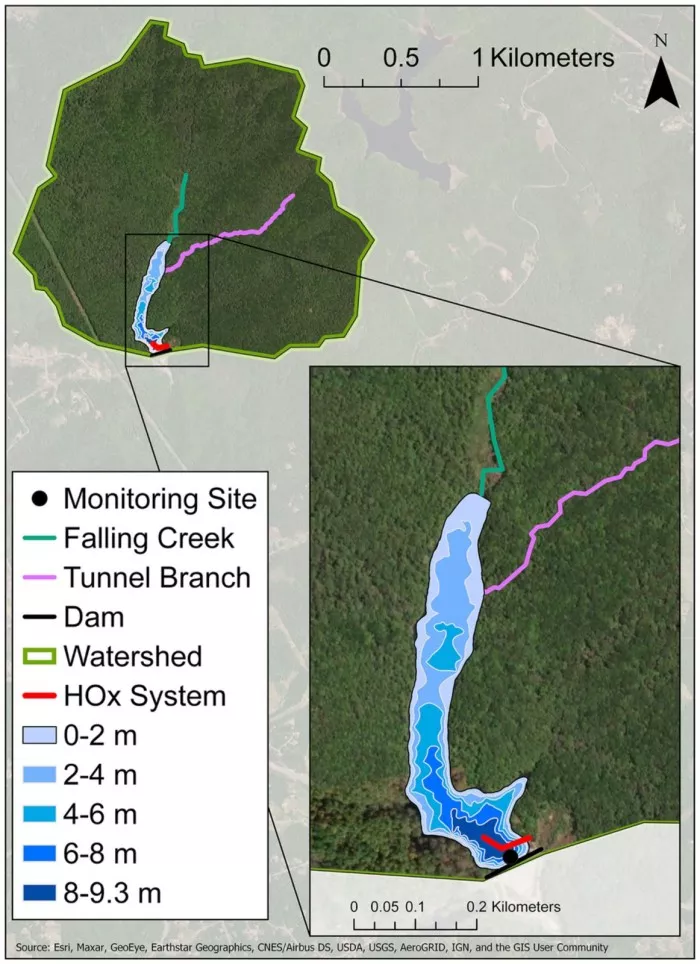Scientists have recently confirmed that the world's lakes are rapidly losing oxygen. Through a 7-year full ecosystem study, a team of fresh water scientists from Virginia Tech University took the lead in raising the next question: what does the global decline in oxygen mean for water quality**

The bottom water of the lake is covered with sediment, not just their deepest and darkest layer. They bury large amounts of carbon, nitrogen and phosphorus found in runoff from land. Cayelan Carey, a freshwater scientist, said that as one of the important nutrient sinks in nature, lakes have won their reputation as "sentinels" of the surrounding environment.
"We think of lakes as sentinels because they really integrate all the changes that take place on land," said Carey, an associate professor of Bioscience at the Virginia Tech School of technology and an associate scientist at the Flynn Institute for life sciences. "Lakes do a very good job in receiving and treating all these carbon, nitrogen and phosphorus, preventing them from flowing downstream and reaching the ocean."

Carey's team published [global change biology] on May 25( https://onlinelibrary.wiley.com/doi/10.1111/gcb.16228 ) 》A study in the journal found that this work may be disrupted by hypoxia, the loss of oxygen supply. Scientists have been worried about hypoxia for many years. Recently, it has been confirmed as a common phenomenon by the data of hundreds of lakes. Hypoxia is widespread, sucking oxygen from the world's fresh water.
This is a phenomenon related to the warming of water area caused by climate change and the excessive pollutant runoff caused by land use. The warming of water body reduces the oxygen holding capacity of fresh water, while the decomposition of nutrients in runoff by fresh water microorganisms consumes oxygen.
In a seven-year field experiment, Carey's team manipulated the oxygen level in the bottom water of the nearby reservoir. Carey's team found that with the emergence of anoxic conditions, they had expected the effect: the sediment released a large amount of nutrients and carbon. But they are not prepared for the extent of these changes. They observed that the lake changed from a water tank -- which retained more nutrients and carbon than it exported -- to a downstream source of nutrients, and began a cycle. The anoxia of one lake may cause anoxia of another lake.
"I didn't expect such a big change in the hydration society," Carey said. "We have seen it continuously in seven years of research -- the effect of hypoxia is several orders of magnitude larger than I originally predicted."

Integrating freshwater and data science
These findings depend on an experiment designed by the team, which is novel in several ways. It must be carried out in the whole ecosystem, not only in the laboratory or in a small range of lake bottom waters, but also in contact with the whole water body. Carey's team conducted a field experiment in falling Creek Reservoir in Vinton, Virginia. The team members used an engineering oxygenation system to manipulate the oxygen level in the lake bottom waters. The system can pump water from the lake bottom, inject dissolved oxygen into the shore at supersaturated concentration, and return the oxygenated water to the lake bottom without changing the water temperature.
Roger Moore of the school of science and Carey, a researcher of mojdeh Khatam Moore college, said that it is very important to understand the impact of hypoxia to manipulate only the oxygen level in the bottom waters, so as to separate it from the impact of temperature changes. "By manipulating oxygen without changing the temperature, we can understand and isolate what its effects will be. We can really say that what we see is the result of oxygen changes, not other external factors that occur in the lake."
However, analyzing the effects of hypoxia is not limited to increasing or decreasing oxygen levels and monitoring water chemistry. Carey said that in field experiments, there are always some data you need but can't collect. It is difficult to sample and measure "those subtle sediment water interactions" without disturbing the site. There is also a logistics problem. Carey couldn't have sent people to collect data every day for seven summers.

Therefore, the team input the data it collected into a model described by Carey as "Lake video game", which simulates those important but difficult interactions. "The basis of the video game is a bunch of equations that we can manipulate to understand which processes are most important when the oxygen level in the reservoir is low or high," she said
The model also enables the team to obtain data on an hourly basis. "This allows us to really understand how quickly lakes respond to changes in oxygen," Carey said.
Role reversal
The researchers observed that the concentration of nutrients released from the bottom waters changed dramatically during hypoxia, including a sixfold increase in nitrogen output. Over time, the lake has changed from a net sink of phosphorus and carbon to a net source of these two nutrients in the downstream water body.
Carey said, "what we see is that the lake can not complete its important work as a sink of carbon, nitrogen and phosphorus. If there is oxygen there, it will do so. The changes of all three elements are very significant, but we see that in general, the ability of the lake to act as a sink is indeed changing."
All these carbon, nitrogen and phosphorus, once buried at the bottom, will not only be released into the water body - which may breed toxic algal blooms, harm freshwater wildlife, and damage the drinking water source of the reservoir - but also these nutrients will move downstream, Carey explained. This is the vicious cycle of hypoxia: as more nutrients reach other lakes, rivers and streams, the microorganisms in each water body will consume more and more oxygen to decompose them.
Carey believes that understanding the severity of this impact should prompt us to take action on land use. "Our research has revealed the mechanism by which such upstream lakes damage downstream lakes. If this situation is widespread, then we must basically do everything possible to protect the lakes from receiving more phosphorus, fertilizers and sediments. I hope we can warn people. These processes are happening, and we don't even know it," she said